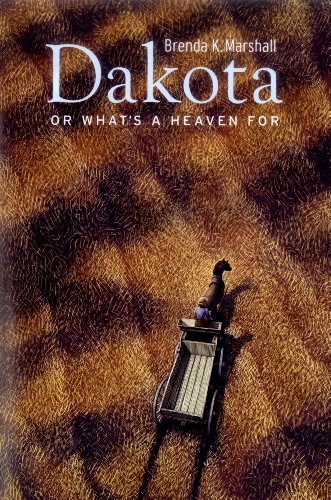Dakota, Or What’s a Heaven For
This dense, splendid novel, set in the Dakota Territory in the 1870s and ’80s, rests on the shoulders of two extraordinary women. Frances, well-bred, educated, burning with intelligence and frustrated ambitions, marries a man to stay close to his sister, her real love. They all move to a farm outside Fargo when the Dakota Territory is still wild and Indian, and from this vantage she witnesses and works in the enormous breaking of this land, the Americanization of the high plains, to this day incomplete.
Part of Marshall’s considerable skill is to give equal weight to the land’s transformative influence on Frances. She is a wonderful character, willful and fierce, too clever to be good, but it’s Kirsten Knudsen, child of Norwegian immigrants, whose appearances I waited for.
Kirsten grows up in a sod house, starved and desperate, and on the wave of frontier energy she thrives and triumphs. Her voice is terrific, funny and wise and full of vigor; her sentences blossom out like a wild prairie rose, vining in a dozen directions, studded with bursts of color.
The lives of these two people carried me through the book, but there are other delights. Marshall presents a picture of frontier politics that makes our current public sphere look pretty dull. She has a huge amount of research to hand, but her craft is to present it entirely in its human terms; I learned a lot without noticing. Her landscapes are riveting: the sweep of the land, the extreme weather, culminating in the description of a terrible blizzard that nobody should read without a cup of hot cocoa in hand. Nice job.










